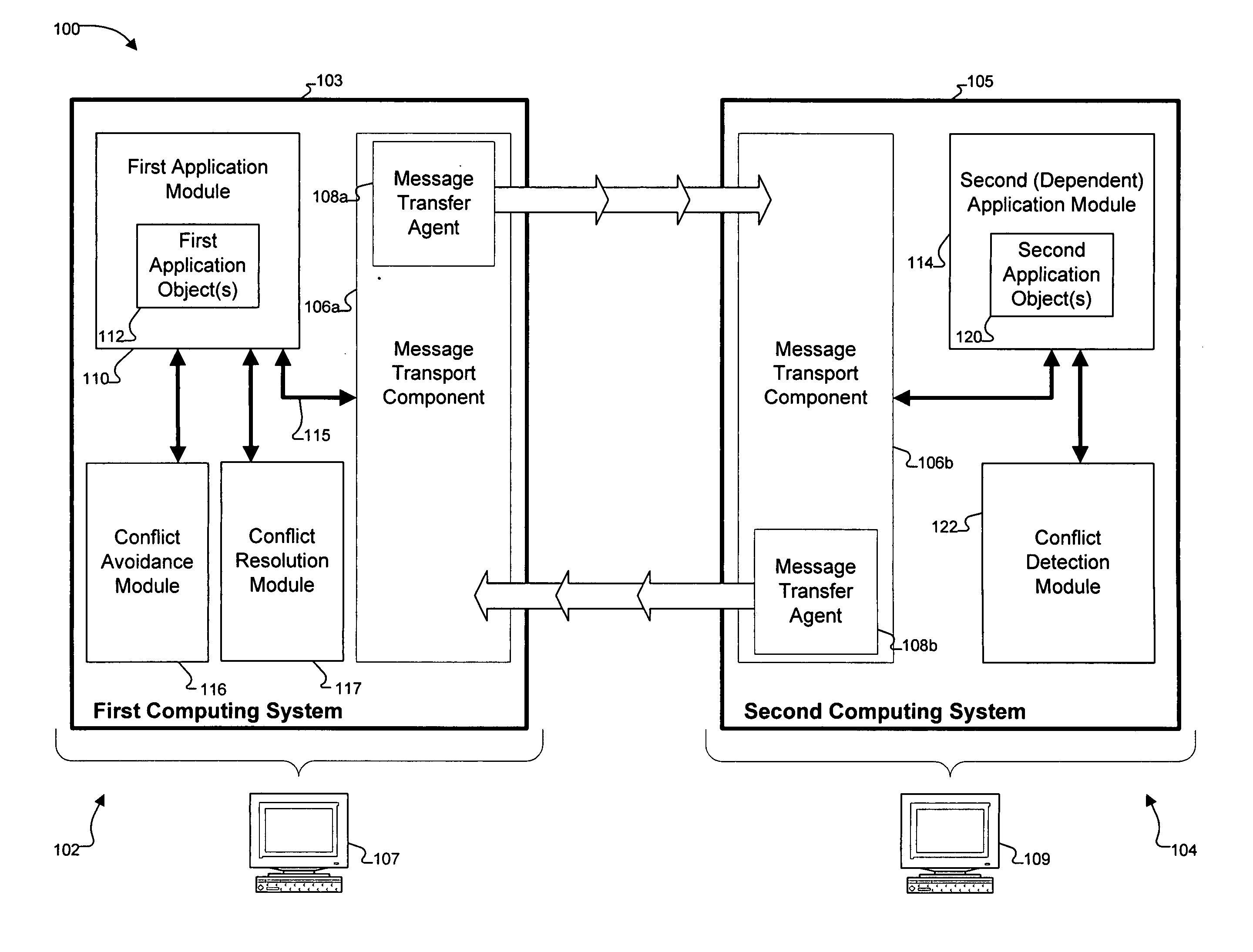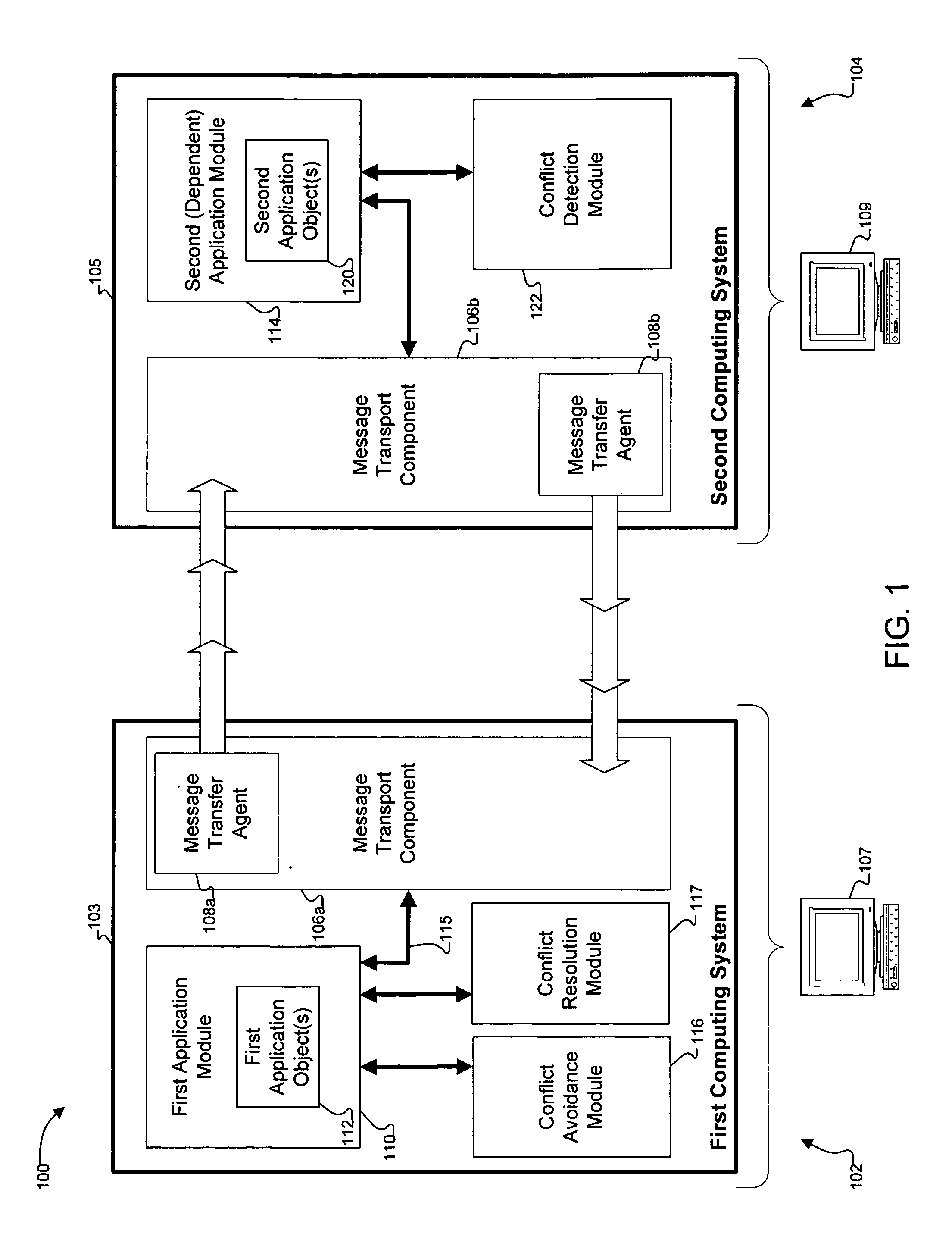Conflict avoidance and resolution in a distributed computing system
a distributed computing system and conflict avoidance technology, applied in multi-programming arrangements, buying/selling/leasing transactions, etc., can solve problems such as conflicting information and sales orders cannot be fulfilled as requested, and achieve the effect of avoiding data conflicts
- Summary
- Abstract
- Description
- Claims
- Application Information
AI Technical Summary
Benefits of technology
Problems solved by technology
Method used
Image
Examples
Embodiment Construction
[0020] A distributed computing system 100, shown in FIG. 1, includes two networked computer systems, which in this example are a first computing system 102 and a second computing system 104. Messages containing a current status of an object or document are transferred asynchronously from the first computing system 102 and eventually to the second computing system 104 by way of respective message transport components 106a and 106b, as is depicted in FIG. 1. Provision of an asynchronous messaging layer allows components in a distributed system to be modified or updated without creating unanticipated changes within other components. The messages are exchanged between the two systems using respective message transfer agents 108a and 108b. The exemplary system 100 shows conflict modules 116, 117 and 122 on both computing systems used to avoid or resolve any messaging or data issues that may arise between the two computing systems.
[0021] The first computing system 102 includes server-sid...
PUM
 Login to View More
Login to View More Abstract
Description
Claims
Application Information
 Login to View More
Login to View More - R&D
- Intellectual Property
- Life Sciences
- Materials
- Tech Scout
- Unparalleled Data Quality
- Higher Quality Content
- 60% Fewer Hallucinations
Browse by: Latest US Patents, China's latest patents, Technical Efficacy Thesaurus, Application Domain, Technology Topic, Popular Technical Reports.
© 2025 PatSnap. All rights reserved.Legal|Privacy policy|Modern Slavery Act Transparency Statement|Sitemap|About US| Contact US: help@patsnap.com



